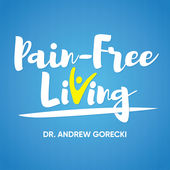
Plantar fasciitis is an injury to connective tissue on the bottom of the foot. To appreciate the Chain Reaction Biomechanics of the CAUSES of plantar fasciitis, the function of this tissue must be understood, particularly as it pertains to walking. The plantar fascia (PF) runs from the inside side of the bottom of the heel, and extends down the length of the foot connecting to the toes. The PF supports the arch of the foot, especially from just before your foot comes off the ground during walking.
As the foot lands on the ground, foot goes through pronation. Pronation of the foot creates mobility in the foot. This mobility allows the foot to adapt to the surface. The arch lowers under the weight of the body and the tissues are loaded. This loading function must very quickly transform into an exploding function (propulsion). The foot is transformed from a mobile to a stable structure by supination of the foot. When the foot is in a supinated position, the foot is stable for propulsion. The PF contributes to this stability. If, in certain circumstances, the foot does not supinate, then the foot stability will be lacking. Without the bony, capsular and muscular support to foot, the PF will be required to handle more stress. The excessive strain that results can produce the clinical symptoms known as plantar fasciitis. The most common consequence is a partial tearing of the PF from the heel.

Many, but not all, of people experiencing plantar fasciitis have the “unlocked” foot because of failure of the foot to adequately supinate prior to the push off phase of walking. The CAUSE may be anywhere in the body.
SAME SIDE LEG – In the same side leg, the suspects are those dysfunctions that allow excessive pronation of the foot, or prevent the supination of the foot.
- Lack of ankle joint bend
- Tight calf group – As the body moves forward over the foot, ankle bend occurs at the ankle and foot. Normally supination reduces foot bend, but if the ankle does not have enough bend, then the foot may stay pronated in order to keep the foot bend available to the body.
- Weak butt muscles– When the foot goes through pronation, the entire butt works to absorb the forces. These motions must be decelerated by the butt mucles. If the butt muscles do not absorb the forces the foot may go through excessive pronation, making sufficient supination for push off difficult to attain.
OPPOSITE SIDE LEG – In the opposite side leg, the causes are conditions that prevent proper push off of that leg. Effective push off rotates the pelvis towards the front leg. The pelvis rotation causes the front leg to rotate outward, assisting supination of the foot.
- Lack of ankle bend or tight calf muscle group – poor ankle bend limits hip extension. When the load prior to push off is decreased, then push off will be decreased.
- Limited hip extension – The greatest power of push off comes from the hip flexor muscles. These muscles will be loaded by the motion of hip extension. Without a good hip extension, the push off will be less than optimal and the rotation of the pelvis towards the landing leg will be reduced.
- Painful or limited big toe extension – As the heel rises in response to the joint motions and muscle contractions of push off, the great toe goes through extension. If this toe extension is limited, the power of the propulsion will be “muffled” and pelvis rotation reduced.
Trunk/Core – In walking, and especially running, the abilities of the butt muscles of the landing leg depend on having a mobile, but stable pelvis at the same time. If the Core muscles are not lengthened and activated, the pelvis will not have mobile-stability, resulting in “functional” weakness of the same side hip muscles.
- Loss of upper back motion – Insufficient upper back motion can result in ineffective loading of the core muscles. Without the core load, pelvic mobile-stability is almost impossible.
- Weak abdominal muscles – If the upper back motion is available, that motion must be decelerated by the abdominals. Then the energy of deceleration must be transformed into concentric, motion-producing force. Failure of the abdominals to decelerate and/ or accelerate both the trunk and pelvis will negatively affect hip power.
- Neck Muscle fatigue/ tightness – As the trunk goes through motion in all three planes creating the load and explode of the core muscles, the neck is actually experiencing motion. With the head looking forward, the movement of the trunk creates bottom-up motion in the neck. If the neck muscles “tighten” with fatigue, either the head will have to rotate from side to side, or the head will remain steady by inhibiting the motion of the upper back.
Effective examination of all the causes, while integrated with the rest of the body, is the power Superior Physical Therapy treatment style. Without an analysis that is looking to determine the cause of plantar fasciitis the permanent solution will not be found and the person will continue to treat the symptoms only. If you would like to learn more about successful treatment strategies for plantar fasciitis please consider coming to our FREE Achilles Tendonitis and Plantar Fasciitis Workshop by either calling 231.944.6541 or click the image below to register online!




